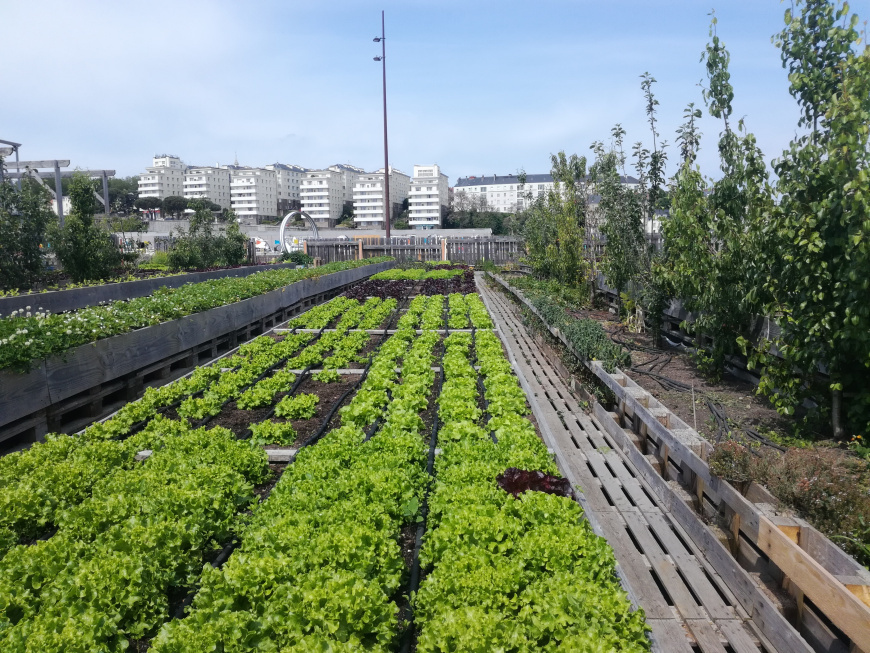6 Easy Facts About City Blooming Described
6 Easy Facts About City Blooming Described
Blog Article
What Does City Blooming Mean?
Table of ContentsThe Definitive Guide for City BloomingAn Unbiased View of City BloomingA Biased View of City BloomingCity Blooming Can Be Fun For AnyoneThe Ultimate Guide To City Blooming
Intrigued in expanding food for sale in the City of Chicago? Below is a listing of frequently asked concerns relating to the rules and guidelines that farmers must think about when preparing a metropolitan agriculture task.
The zoning amendment does not customize any type of other codes handling composting, building permits, purchasing or leasing City possessed home, service licenses or environmental contamination. There are existing codes that manage these concerns and they continue to be in complete effect and might apply to your project. Neighborhood yards are generally possessed or handled by public entities, civic organizations or community-based companies and preserved by volunteers.
Urban ranches grow food that is planned to be marketed, either on a nonprofit or for-profit basis. As a result of their industrial objective, metropolitan ranches require a business permit. Yes. A community garden is enabled to market excess produce that was grown on website if the sales are accessory or subservient to the yard's primary purpose described above.
The Single Strategy To Use For City Blooming
The amount of garden compost material can not surpass 25 cubic yards at any type of provided time according to the standards in 7-28-715 of the City's Municipal Code. Because the dirt at most new garden sites needs modifying, garden compost, dirt, timber chips, or other materials can be acquired to build or improve the expanding space.

If a building permit is required after that the hoophouse will certainly be thought about an accessory structure. You can locate out even more concerning the structure authorization requirements by getting in touch with the Department of Buildings. The 25,000-square-foot size restriction is meant to stop a single neighborhood garden from dominating a provided block or taking away from the block's existing residential or commercial character.
The limit does not relate to yards found in Public Open Room (POS) districts. Can there be greater than one neighborhood yard that is 25,000 square feet on a solitary block? Yes. The size limit relates to specific gardens, not to individual blocks. No. Fence is not required, nonetheless, gardens that have big parking lot might be called for to mount fence or other landscape design functions.
The Best Strategy To Use For City Blooming
B1 & B2 districts require that all industrial use tasks be conducted inside your home. Is secure fencing needed for urban farms? Fencings may be called for, along with landscape design and screening, for specific car park areas and outside job or storage areas depending on place and the certain activity taking place.
Urban ranches require building licenses and zoning authorizations prior to building and construction (landscaping). Various other forms of city review may be called for depending on details structures, tasks, dimension, landscape design, licensing, public heath and stormwater management problems.
The Division of Service Matters and Consumer Protection can help determine the particular type of company license that's called for. Off road car park is required for most industrial tasks in Chicago. The needed number of car park areas is based on the number of workers working on website and not the square video of the growing area.
City Blooming Fundamentals Explained

An urban farm can sell garden compost product created on site, nonetheless, the operation has to comply with the guidelines in 7-28-715 of the Chicago Municipal Code. Aquaponic systems are permitted inside your home on metropolitan ranches in numerous zoning areas.
As much as five hives or colonies of honey may be maintained as an accessory use. Beekeepers need to sign up with the Illinois Department of Farming. For more details concerning the proposed zoning change you might contact the Department of Real Estate and Economic Development, Bureau of Preparation and Zoning at 312.744.8563.
Farming in cities and metropolitan locations A metropolitan ranch in Chicago. Urban farming refers to numerous practices of growing. https://slides.com/cityblooming, handling, and distributing food in city locations. The term additionally relates to the location activities of pet husbandry, tank farming, beekeeping, and horticulture in a city context. Urban agriculture is identified from peri-urban agriculture, which happens in backwoods beside suburban areas.
City Blooming for Dummies
It can include a movement of organic cultivators, "foodies" and "locavores", that look for to create social networks founded on a common ethos of nature and neighborhood holism. These networks can create using official institutional assistance, becoming integrated right into regional town preparation as a "transition town" movement for sustainable metropolitan development.
The a lot more straight access to fresh veggie, fruit, and meat items that might be become aware through city farming can improve food safety and security and food security while decreasing food miles, bring about lower greenhouse gas emissions, thus adding to environment change mitigation. Some of the very first proof of city agriculture comes from Mesopotamia.
Report this page